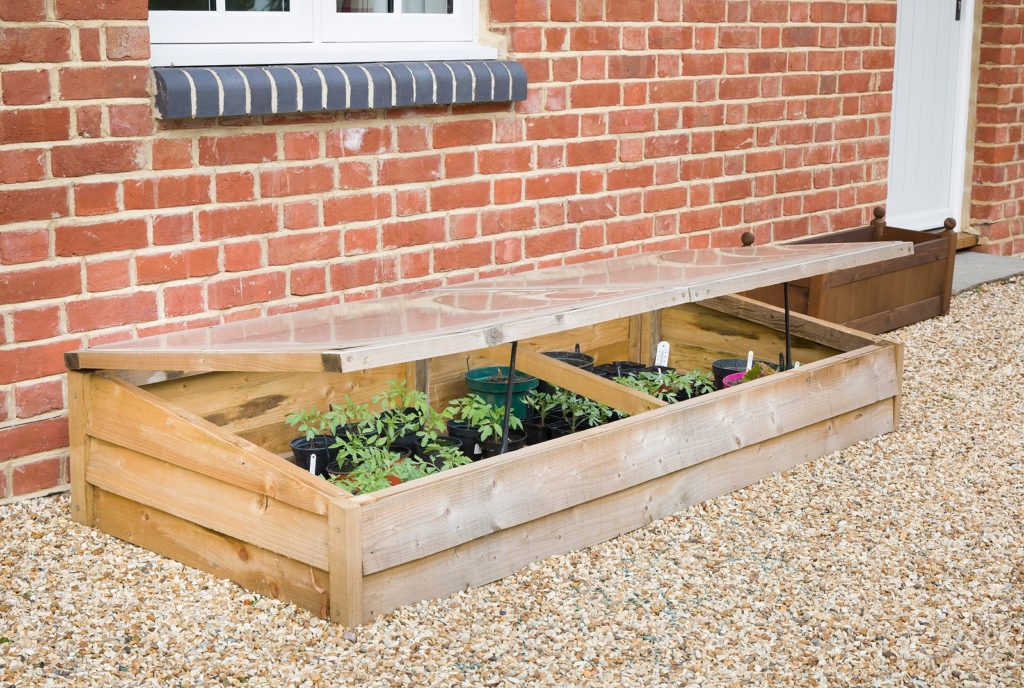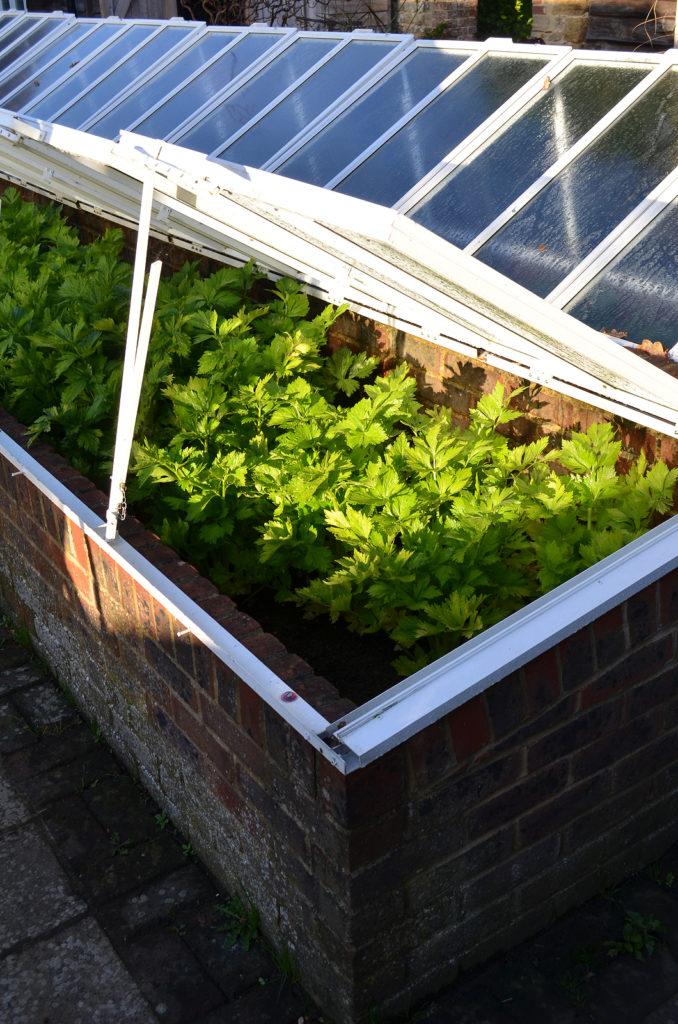A cold frame can extend the growing season, either in spring or autumn.
A cold frame is a sturdy, open-bottomed box with a glass or plastic lid that lets sunshine in but keeps the cold out. Sunlight trapped in the closed box heats the air and soil inside allowing plants to thrive.
In spring, cool-weather vegetables can begin growing in a cold frame for several weeks before they can grow out. You can also use a cold frame to harden off vegetable seedlings started in the house or greenhouse.
In summer you can remove the lid of the cold frame and use the frame to start seeds that can later be transplanted into the garden for autumn or winter harvest.
In winter, cold frames are used to protect crops for winter harvest or to overwinter plants for an early spring start. The cold frame can protect mature crops from freezing winter temperatures allowing for a harvest through the winter. Leafy crops are commonly grown in cold frames in winter.
You can purchase a pre-made cold frame and easily assemble it wherever you want to grow or you can make a cold from lumber, cement blocks, or bricks.

Why use a cold frame?
- Use a cold frame to start seedlings in spring.
- Use a cold frame to harden off indoor or greenhouse-started seedlings before transplanting them into the garden.
- Use a cold frame in early spring to start cool-weather crops
- Use a cold frame to winter over tender plants.
- Use a cold frame to grow winter lettuces and other salad greens.
- Use a cold frame to start seeds in summer for late summer planting and autumn harvest.
- Use a cold frame to protect plants from frost damage for up to a month at the beginning and end of the growing season.
- Use a cold frame to protect plants from wind, heavy rain, frost, ice, snow, and pest problems.
How cold frames are different than greenhouses
- Cold frames are simpler than greenhouses and less expensive.
- Greenhouses are equipped with fans, heaters, vents, and shutters. They have more temperature controls than a cold frame. A cold frame usually has no heating system.
- A greenhouse usually has a thicker protective covering than a cold frame. A greenhouse may have polycarbonate or a double layer of polyethylene plastic. A cold frame usually has a single layer of film or fabric.
- A greenhouse usually has tables of shelving for flats and containers. A cold frame is smaller and is commonly set directly in the ground or over a raised bed.
- A cold frame is less expensive than a fully equipped greenhouse but provides many of the same benefits.

Cold frame use tips
Cold frames should be opened when the day temperatures begin to climb greater than 45°F, otherwise, can overheat and you risk losing the plants. The temperature inside a closed cold frame can be 10 to 20 degrees warmer than the outside temperature.
Prop the cold frame open when daytime temperatures are going to rise above 45°F. You can add an inexpensive automatic vent opener to open the top of the frame when the outside temperature reaches a certain point.
Ventilation is important. If the temperature climbs too high inside a cold frame, plants can die from excess heat. When temperatures stay consistently warm, plants will put on soft growth which is easily damaged by cold weather. Cold frames are used to “harden off” young plants; that means acclimatizing them to outdoor temperatures.
Use a digital thermometer to monitor the minimum and maximum temperature in the cold frame.
Keep the top of the cold frame free of obstructions; sweep away leaves and snow that might fall on the lid. Clear away ice that forms on the lid. The top of the cold frame must be unobstructed and clear otherwise plants can suffer from the lack of light.
To capture more light in the cold frame, you can paint the inside walls white or line them with aluminum foil. This will reflect light to all parts of growing plants. You can also line the inside of the cold frame with styrofoam or other insulating material.
Place gallon water jugs inside the cold frame. They will capture solar heat during the day and release it slowing into the frame at night. Paint the jugs black to attract more solar heat.

Cold frame frequently asked questions
Q: What crops would I grow in a cold frame?
A: Most gardeners use cold frames to grow early and late-season crops. These are cool-weather crops such as kale, spinach, radish, winter lettuces, scallions, arugula, Swiss chard, and corn salad.
Q: Where should I put my cold frame?
A: Place the cold frame where it will get the most sunlight early and late in the year. Face the cold frame toward the south where it will get the most sun during the day. Place the cold frame out of prevailing winds. If possible locate the cold frame near a house, shed, garage, or greenhouse.
Q: If my cold frame can’t be placed close to a sheltering structure, how do I protect it from bitter cold?
A: To insulate a free-standing cold frame, you can place bales of straw or bags of leaves on the north side or other exposed sides of the frame.
Q: What is the best material for a cold frame?
A: A cold frame is simply a box with an open bottom and a translucent top. You can make a cold using wood, straw bales, bricks, or concrete blocks. Many gardeners prefer cold frame kits made with polycarbonate sides and tops These can be easy to assemble and disassemble and are not more expensive than a wooden cold frame.
Cold frame buying tips
Consider the number of plants you want to grow or protect in the cold frame. Consider the size of the plants–will you be growing seedlings or protecting mature plants from the cold? Mature plants will need more room than seedlings.
Will the cold frame be permanently located or will you move it around? Plastic cold frames are lightweight and are easily moved from spot to spot.
Shopping list
- Cold frame
- Cold frame automatic lid opener
- Cold frame ventilator
- Cold frame thermometer
Related articles:
Vegetable Garden Season Extension
Cool Season Vegetable Garden Varieties
Vegetable Garden Growing Season
Plastic Tunnels for Growing Vegetables



